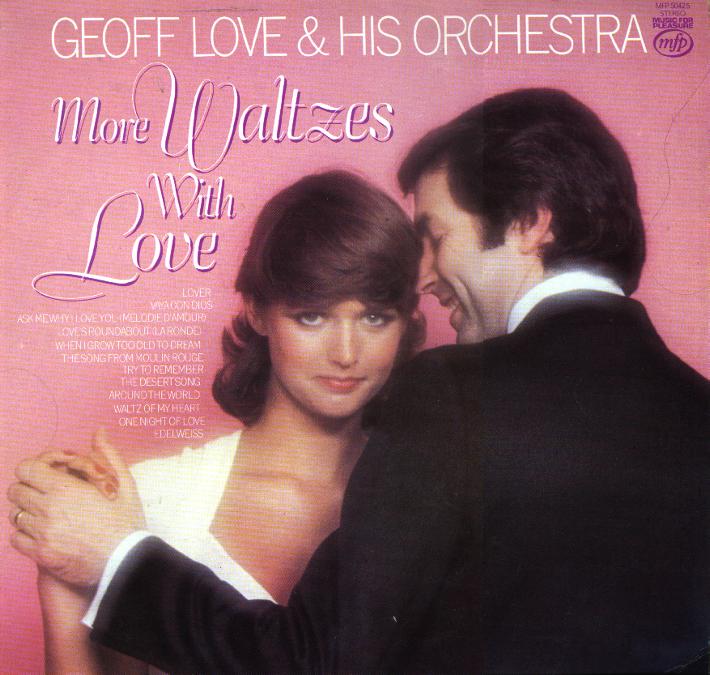


TRACK LISTING
SIDE ONE
1."LOVE'S ROUNDABOUT"
("La Ronde") (Strauss)
2."THE DESERT SONG" (Harbach/Hammerstein II/Romberg)
3."AROUND THE WORLD" (Adamson/ Young)
4."WHEN I GROW TOO OLD TO DREAM" (Romberg/Hammerstein II)
5."VAYA CON DIOS" (Russell/James/Pepper)
6."ONE NIGHT OF LOVE" (Kahn/Schertzinger)
SIDE TWO
1."LOVER"
(Rodgers/Hart)
2."EDELWEISS" (Rodgers/Hammerstein II)
3.The Song from "MOULIN ROUGE" (Auric)
4."TRY TO REMEMBER" (Jones/Schmidt)
5."ASK ME WHY I LOVE YOU" (Melodie d'Amour) (Scotto arr Love lyrics Newell)
6."WALTZ OF MY HEART" (Novello/Hassall)
Recorded at The Music Centre,
Wembley
Recording Engineer: John Richards
Assistant Engineer: Barry Kidd
Associate Producer: Gil King
Produced by Norman Newell
(P)1979 A SUPERTUNES PRODUCTION
The waltz is a warm, friendly
dance. Something that even those of us with two left feet can perform with some
modicum of success, providing we count 1-2-3 carefully with the accent on 1 and
have the assistance and support of a helpful and tolerant partner.
It all began in Vienna from old ingredients taken from the Austrian laendler,
the German deutsche danz, the volte and the dreher. Apparently people originally
hopped to it (they still do when we of the two left feet variety score a direct
hit), but later a gliding movement known as the schiefer was adopted as a more
graceful and elegant manoeuvre. The waltz came into the first stage of its full
glory in 1814 and the following year when it was introduced to foreign delegates
attending the Austrian Peace Congress.
An Austrian maestro called Joseph Lanner brought it to a further peak with his
dance orchestra, which included a viola player named Johann Strauss. Lanner and
Strauss wrote many highly popular waltzes together before 1825 when Strauss left
to form his own rival orchestra to star in the Viennese ballrooms. He in turn
was later overshadowed by his son Johann junior, who took the waltz to its
supreme height of popularity in Vienna and around the world with his own
orchestra playing his scintillating waltz compositions.
The fast Viennese waltz was joined in 1912 by a slower version of the dance
known as the Boston, reducing the speed and the number of turns, and it was from
this innovation that the modern waltz has evolved, with dancers following the
melody as much as the rhythm. Well-known British maestro Geoff Love offers
twelve excellent examples in this warm, friendly album which you will find ideal
for listening or waltzing.
NIGEL HUNTER
MUSIC WEEK